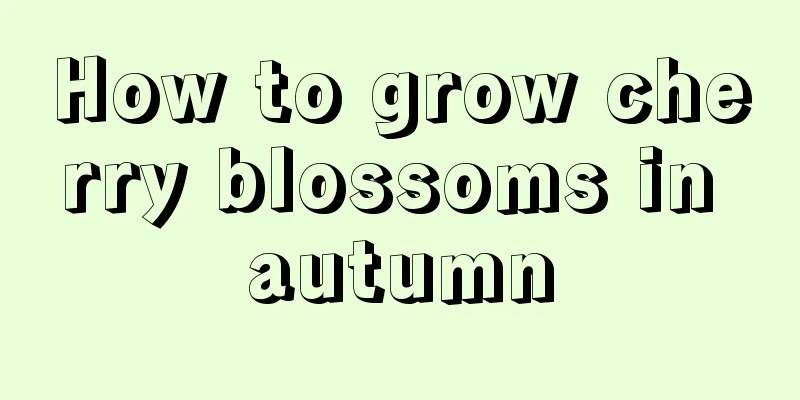Purple Magnolia Planting Methods and Precautions

|
Purple magnolia, also known as magnolia, is loved for its elegant flower shape and beautiful purple petals. As a common garden ornamental plant, purple magnolia not only has ornamental value, but also has certain medicinal value. So how to plant purple magnolia correctly? Let’s talk about the planting methods and precautions of purple magnolia. 1. Site selection and soil preparation Purple magnolia likes an environment with sufficient light and good ventilation. When planting, try to choose a location with plenty of sunlight. If space is limited, ensure at least 6 hours of direct light per day. In terms of soil, purple magnolia has relatively high requirements for soil and prefers loose, well-drained, acidic or slightly acidic soil rich in organic matter. 2. Planting time and method Purple magnolia is suitable for planting in spring and autumn. Choose a relatively warm, frost-free day to transplant or sow seeds. Before planting, dig a hole slightly larger than the root ball and spread a layer of well-rotted organic compost in the bottom of the hole. Then place the purple magnolia seedlings into the pit, fill the soil and compact it lightly, and finally water it enough to allow it to take root. 3. Watering and fertilizing Purple magnolia has high requirements for water, especially during the growth and flowering periods. Keep the soil moist in spring and summer and avoid drought. Reduce watering in winter and keep the soil slightly dry. In terms of fertilization, apply compound fertilizer once before flowering in spring, and then apply diluted liquid fertilizer once every month to promote growth and flowering. 4. Pruning and shaping Purple magnolia grows quickly and requires regular pruning. After the flowering period is over, light pruning is done to remove dead flowers and branches to maintain the beautiful shape of the tree. At the same time, regularly cleaning diseased and insect-infested branches can prevent the occurrence of pests and promote ventilation and light transmission. 5. Pest and disease control Although purple magnolia is relatively disease-resistant, it may still be attacked by some pests and diseases, such as powdery mildew and aphids. In the spring when diseases and insect pests are likely to occur, you can use biological pesticides or soapy water to spray the leaves for prevention and treatment. When encountering serious diseases and insect pests, cut off the diseased branches in time and observe regularly to prevent the spread of the disease. 6. Winter protection measures In areas with cold winters, purple magnolia needs proper cold protection. Before winter comes, you can cover the roots of the purple magnolia with a layer of straw or leaf mold to keep it warm and prevent frost. For seedlings or newly transplanted plants, you can use straw or non-woven fabric to wrap the trunk to avoid frost damage. Purple magnolia is an ornamental and practical plant. It is not difficult to cultivate, but it does require careful care. By choosing a suitable planting site, watering and fertilizing regularly, paying attention to pruning and shaping, and doing a good job of disease and pest control, you can easily make the purple magnolia grow healthily in the courtyard and bloom beautiful flowers.
|
<<: When is the best time to take fig cuttings?
>>: Four-season Begonia cultivation methods and techniques
Recommend
Is Fragrant Wood Toxic?
1. Is it toxic? I just want to tell all my friend...
Cultivation methods and precautions of Tigerthorn
1. Soil The first thing to pay attention to when ...
Should I plug the hole under the flower pot? What should I use to plug the hole under the flower pot to prevent water leakage?
Do the holes at the bottom of the flower pot need...
Cultivation methods and precautions of Onslow succulents
1. Soil It does not have many requirements for th...
How to grow a small rose
Is it easy for rose hips to bloom? The rose bush ...
What kind of crop is Astragalus sinensis? It belongs to the leguminous crop
What kind of crop is Astragalus sinicus Milk vetc...
This flower can survive on a wooden board without soil, and it will bloom with just a little water!
Dendrobium Dendrobium is also called the resurrec...
How to raise Aizenjin
1. Maintenance methods 1. Temperature: Its cold r...
How to grow Buddha lotus in winter
Sunlight: The temperature in the north has droppe...
Can jasmine be watered with rice water? What to do if peanut bugs occur when watering?
1. Can it be used Jasmine flowers can be watered ...
When is the best time to plant onions?
Scallion is a very common seasoning vegetable tha...
What plants cannot be watered with rice water? Can Jianlan be watered with it?
1. What plants should not be watered? Rice water ...
The leaves are all green, right?
1. Is this statement correct? Many of the leaves ...
What flowers are suitable for growing in Jinzhong? What are the city flowers and trees?
1. Climate characteristics of Jinzhong Jinzhong h...
Can jujube trees be planted in the yard?
Can I plant a jujube tree in the yard? Jujube tre...









